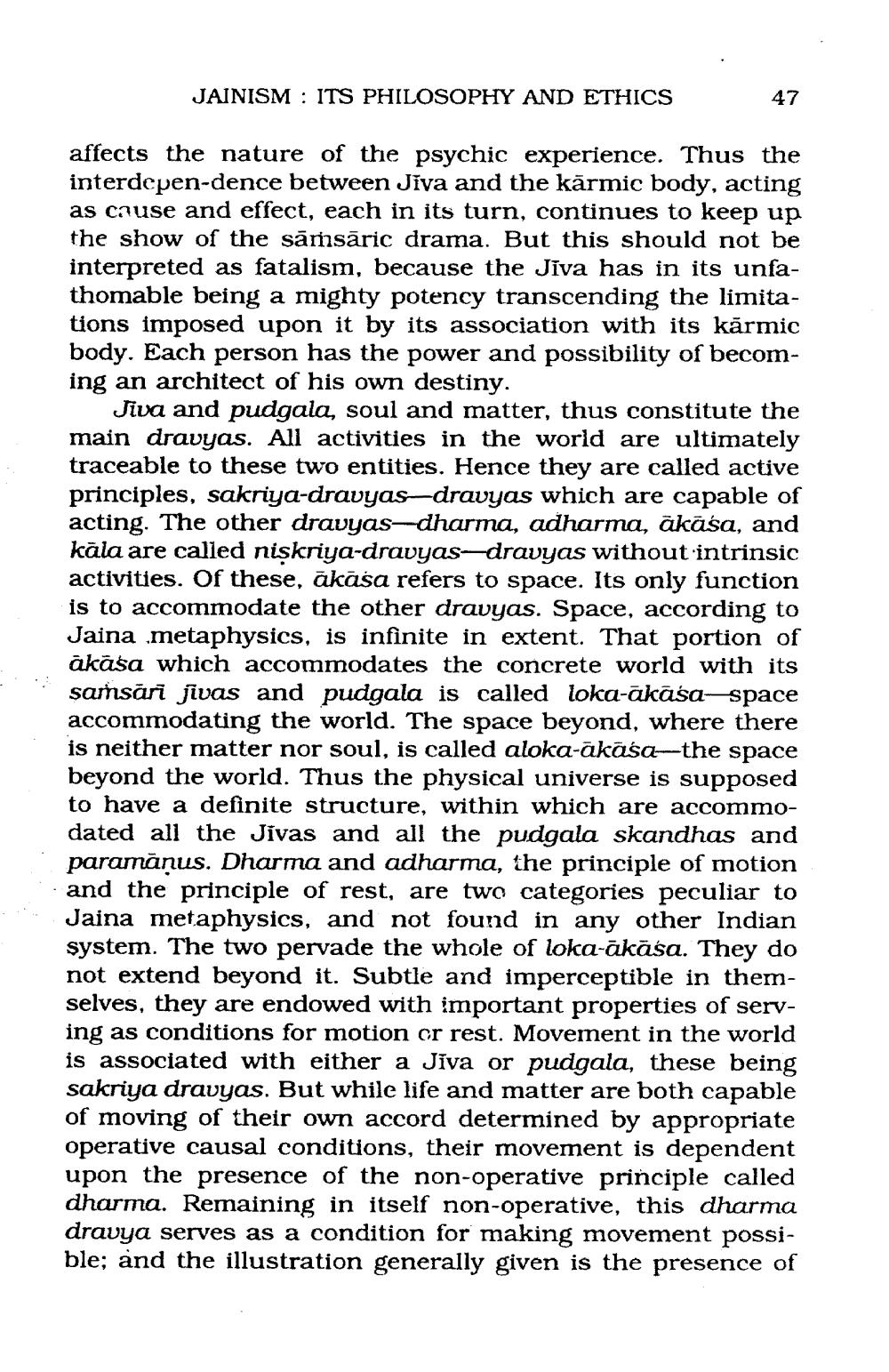________________
JAINISM ITS PHILOSOPHY AND ETHICS
47
affects the nature of the psychic experience. Thus the interdepen-dence between Jīva and the karmic body, acting as cause and effect, each in its turn, continues to keep up the show of the samsaric drama. But this should not be interpreted as fatalism, because the Jiva has in its unfathomable being a mighty potency transcending the limitations imposed upon it by its association with its kārmic body. Each person has the power and possibility of becoming an architect of his own destiny.
Jiva and pudgala, soul and matter, thus constitute the main dravyas. All activities in the world are ultimately traceable to these two entities. Hence they are called active principles, sakriya-dravyas-dravyas which are capable of acting. The other dravyas-dharma, adharma, ākāśa, and kāla are called niṣkriya-dravyas-dravyas without intrinsic activities. Of these, ākāśa refers to space. Its only function is to accommodate the other dravyas. Space, according to Jaina metaphysics, is infinite in extent. That portion of ākāśa which accommodates the concrete world with its samsări jivas and pudgala is called loka-ākāśa-space accommodating the world. The space beyond, where there is neither matter nor soul, is called aloka-ākāśa-the space beyond the world. Thus the physical universe is supposed to have a definite structure, within which are accommodated all the Jivas and all the pudgala skandhas and paramāņus. Dharma and adharma, the principle of motion and the principle of rest, are two categories peculiar to Jaina metaphysics, and not found in any other Indian system. The two pervade the whole of loka-ākāśa. They do not extend beyond it. Subtle and imperceptible in themselves, they are endowed with important properties of serving as conditions for motion or rest. Movement in the world is associated with either a Jiva or pudgala, these being sakriya dravyas. But while life and matter are both capable of moving of their own accord determined by appropriate operative causal conditions, their movement is dependent upon the presence of the non-operative principle called dharma. Remaining in itself non-operative, this dharma dravya serves as a condition for making movement possible; and the illustration generally given is the presence of




